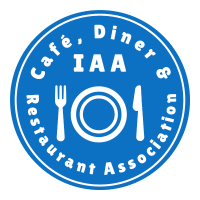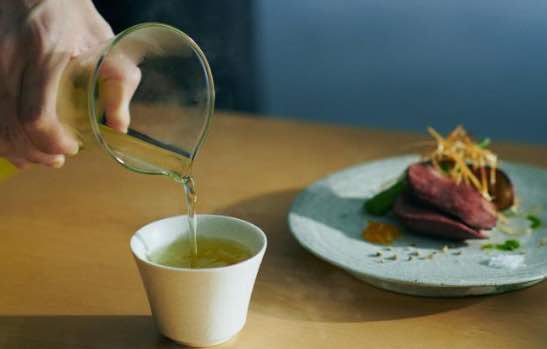Joanne Chang’s Best Boston Cream Pie
“It’s a little risky to try making your own version of Boston cream pie, an iconic dessert in a city so steeped in tradition,” writes Boston pastry chef Joanne Chang. “I learned how to make this version from Rick Katz, the first pastry chef I ever worked for. He created a Boston cream pie that was lighter and less cloyingly sweet than the original, which meant lightening up the cake, the filling, and the glaze. The filling is not just straight pastry cream as the original version calls for but a fluffier version that’s mixed with whipped cream. And the glaze is pure chocolate ganache, which makes for the most decadent finish ever.”
See More in “Winter Baking with Joanne Chang,” January/February 2020
Yield: 6 servings
For the pastry cream
Ingredients
- 1 ¼ cups milk
- ½ cup (100 grams) sugar
- ¼ cup (30 grams) cake flour
- ½ teaspoon kosher salt
- 4 large egg yolks
- 1 teaspoon vanilla extract
- 1 cup heavy cream (reserve until cake assembling stage)
Instructions
First, make the pastry cream: In a medium saucepan, scald the milk over medium-high heat (bubbles start to form around the edge of the pan, but the milk is not boiling). Meanwhile, in a small bowl, stir together the sugar, flour, and salt. In a medium bowl, whisk the egg yolks until blended, then slowly whisk in the flour mixture. The mixture will be thick and pasty.
Remove the milk from the heat and slowly add it to the egg-flour mixture, a little at a time, whisking constantly. When all of the milk has been incorporated, return the contents of the bowl to the saucepan, and place over medium heat. Whisk continuously and vigorously until the mixture thickens and comes to a boil, about 3 minutes. Once it thickens, stop whisking every few seconds to see if the mixture has come to a boil. If it has not, keep whisking. As soon as you see it bubbling, immediately go back to whisking for just 10 seconds, and then remove the pan from the heat (any more time and the mixture can become grainy).
Pour/push/scrape the mixture through a fine-mesh sieve into a small, heatproof bowl. Stir in the vanilla and cover with plastic wrap, placing it directly on the surface of the pastry cream. This will prevent a skin from forming. Refrigerate for at least 4 hours, or until cold, or for up to 3 days in an airtight container.
For the ganache
Ingredients
- 4 ounces semisweet or bittersweet chocolate, chopped
- ½ cup heavy cream
Instructions
Now, make the ganache: Place the chocolate in a small, heatproof bowl. In a small saucepan, bring the cream to just under a boil—bubbles will start to form around the edge of the pan—over high heat. Pour the hot cream over the chocolate and let sit for 30 seconds. Slowly whisk the chocolate and cream together until the mixture is smooth. Let cool to room temperature.
Now, make the cake: Preheat the oven to 350° and set a rack to the middle position. Line a 13-by-18-inch baking sheet with parchment paper. Cut a piece of cardboard into a rectangle about 6 by 8 inches. Set aside.
For the cake and coffee syrup
Ingredients
- For the cake
- 4 large eggs, separated, plus 3 large egg whites
- ¼ cup (50 grams) plus ¾ cup (150 grams) granulated sugar
- 2 tablespoons lemon juice
- ¾ cup (90 grams) unbleached all-purpose flour
- Pinch of kosher salt
- For the coffee syrup
- ¼ cup hot coffee
- ¼ cup (50 grams) granulated sugar
Instructions
Now, make the cake: Preheat the oven to 350° and set a rack to the middle position. Line a 13-by-18-inch baking sheet with parchment paper. Cut a piece of cardboard into a rectangle about 6 by 8 inches. Set aside.
To make the sponge cake, using a stand mixer fitted with a whisk attachment (or a handheld mixer), beat together the egg yolks, ¼ cup sugar, and lemon juice on high speed until thick and voluminous, at least 6 to 8 minutes (10 to 12 minutes with a handheld mixer). Stop the mixer once or twice during whipping and scrape the sides of the bowl and the whisk to make sure to get all of the sugar and yolks to mix evenly. Transfer to a large bowl and set aside.
Clean the mixer bowl and the whisk attachment (they must be spotlessly clean) and fit the mixer with the whisk. Place all the egg whites into the bowl and beat on medium speed for 1 to 2 minutes. To test for the soft-peak stage, stop the mixer and lift the whip out of the whites; the whites should peak and then droop.
On medium speed, add the remaining sugar very slowly, taking about a full minute to add all of the sugar. Whip on medium speed for another 2 to 3 minutes, or until the whites are glossy and shiny and hold a stiff peak when you slowly lift the whip straight up and out of the whites.
Using a rubber spatula, gently fold about ¹⁄3 of the whipped whites into the yolk mixture to lighten it. Then gently fold in the remaining egg whites. Sift the flour and salt over the top of the mixture and fold in gently until the flour folds in completely. Spread the batter evenly in the prepared pan using an offset spatula to smooth the batter so it is even. Don’t worry about the top being perfectly smooth; it is more important that the batter be spread evenly so that the cake is the same thickness throughout.
Bake for 18 to 24 minutes, rotating the cake pan once to ensure even baking, or until the top springs back when pressed in the center with fingertips and is pale golden brown. Let the cake cool in the pan for about 5 minutes.
Run a paring knife around the edge of the cake to loosen it from the pan sides and invert the cake onto a cutting board. Gently peel off the parchment, and allow the cake to cool completely. Using a chef’s knife, cut the sponge cake in half crosswise and then in half lengthwise; this will leave you with four rectangles, each about 5½ by 8 inches.
Now, make the coffee syrup: Stir together 1/4 cup hot coffee and ¼ cup (50 grams) granulated sugar until the sugar is dissolved. Brush cake rectangles evenly with the coffee syrup, using up all of the syrup. Place a cake quarter on the prepared cardboard rectangle. At this point, you want to trim the cardboard so that it’s flush with the cake.
When the pastry cream is done chilling, whip 1 cup heavy cream in a medium bowl until it holds firm, stiff peaks. Fold in the pastry cream until well combined. Using an offset spatula, spread about ¹⁄3 of the pastry cream mixture evenly over the cake. There’s a tendency for the cream to mound in the center, so be sure to spread it so that it’s actually slightly thicker at the edges of the cake.
Place a second cake layer on top of the cream and press down slightly. Using an offset spatula, spread about half of the remaining pastry cream mixture evenly over the cake. Again you want to spread the cream a bit thicker along the edge of the rectangle.
Place a third cake layer on top of the cream and press down. Using an offset spatula, spread the rest of the pastry cream mixture as above.
Top the cake with the final cake layer and press down lightly. Lightly drape the cake with plastic wrap and place the cake in the freezer on a level surface and freeze until it is frozen solid, about 8 hours and up to 2 weeks.
A few hours before serving, remove the cake from the freezer and place on a cutting board. Using a large chef’s knife dipped in hot water, trim the edges of the cake so that they’re even and clean.
Place the cake on a rack with a baking tray underneath. Heat up the ganache until it’s pourable and pour it carefully over the entire top of the cake. Spread the ganache on top so that the chocolate layer is flat and even. Let the glaze drip down the sides. Carefully transfer the cake to a serving plate. Let the cake defrost before serving by letting it sit at room temperature for about 2 hours or in the fridge for at least 4 hours. Slice and serve.



